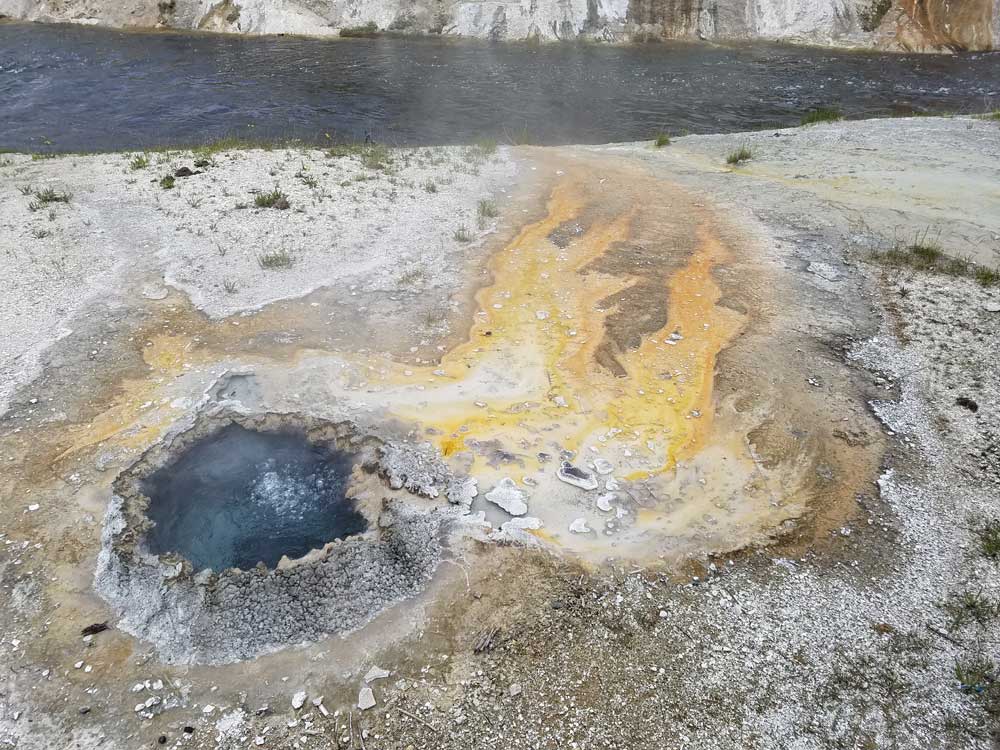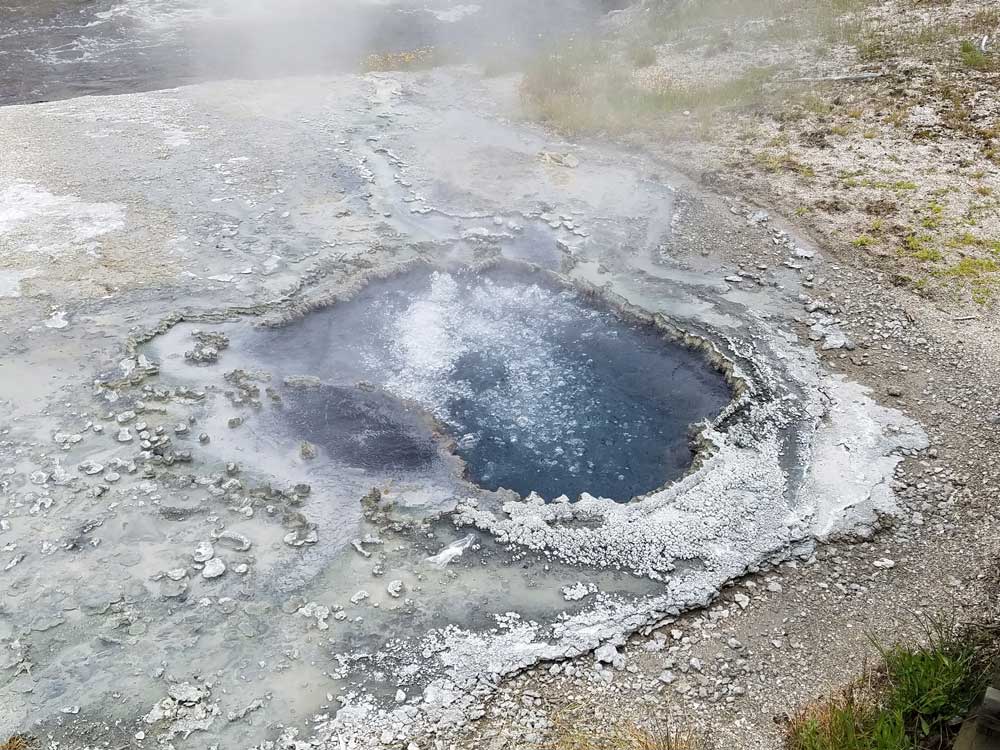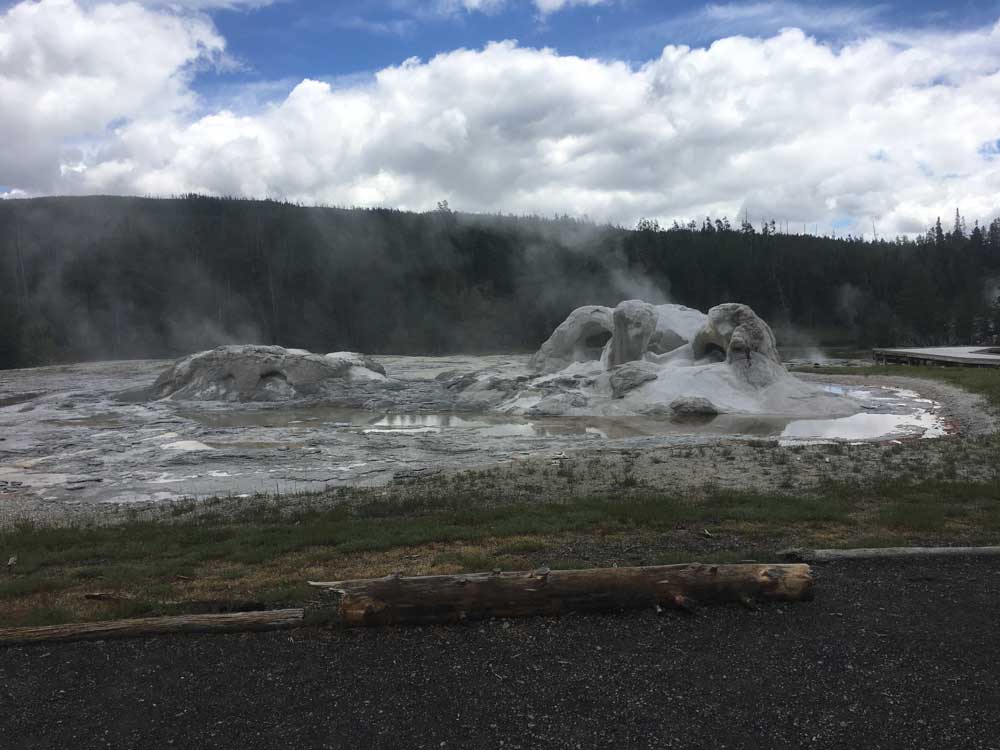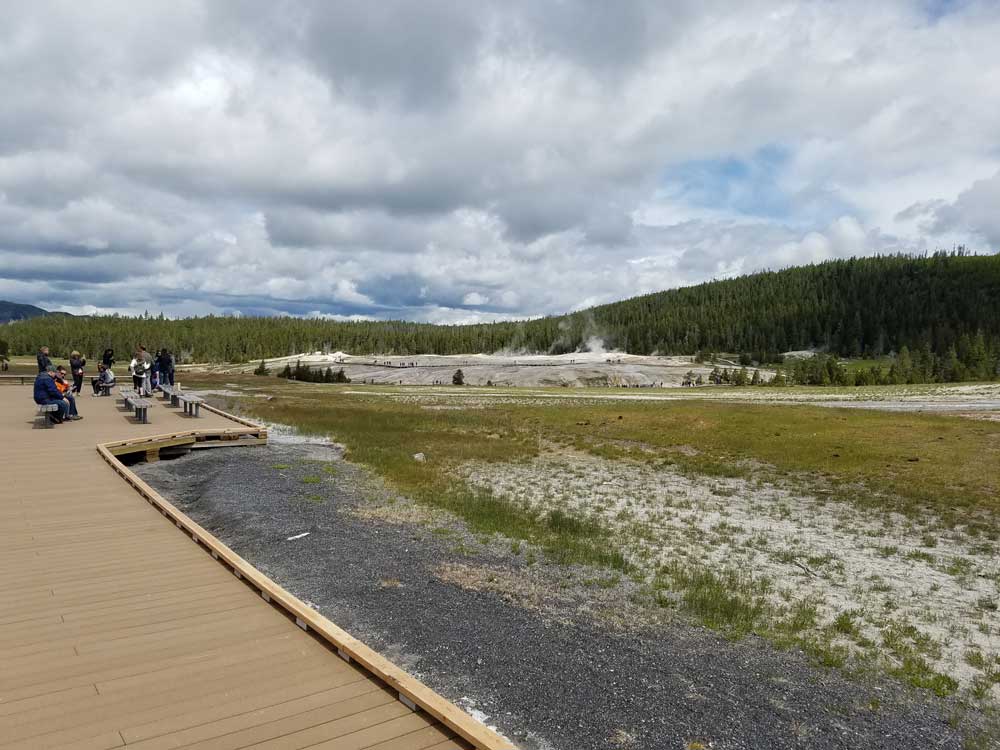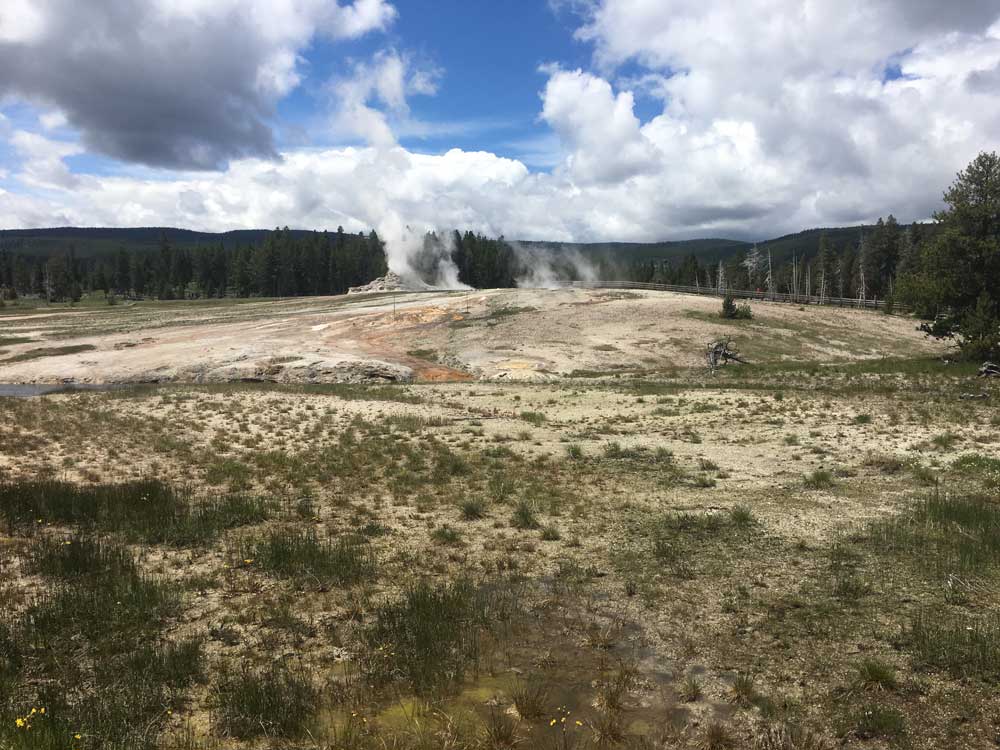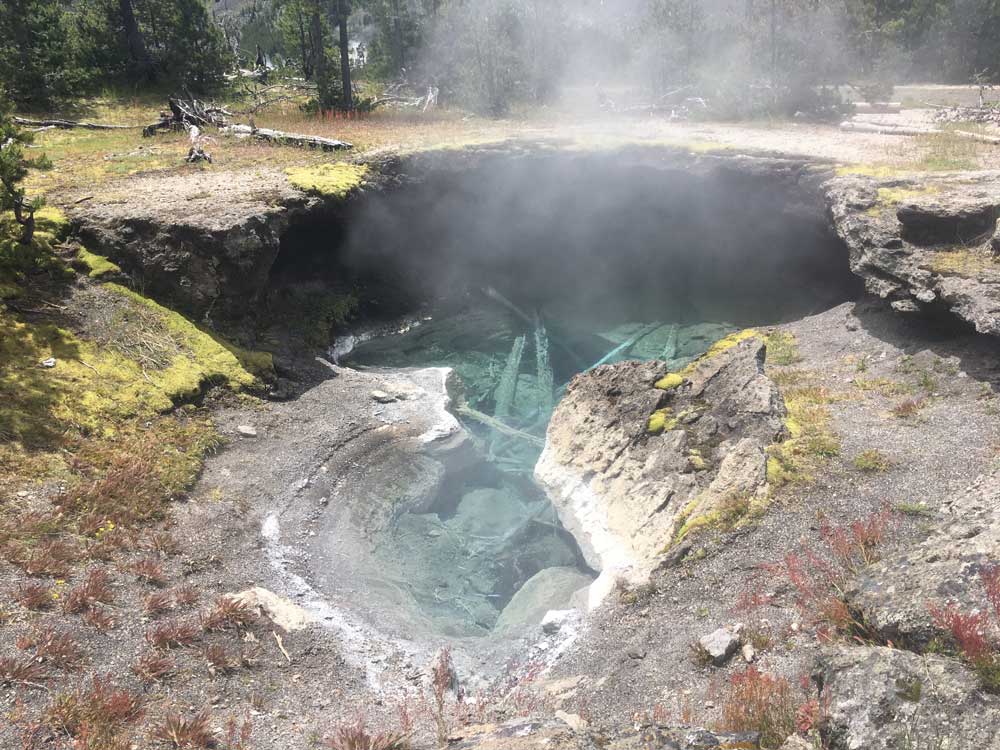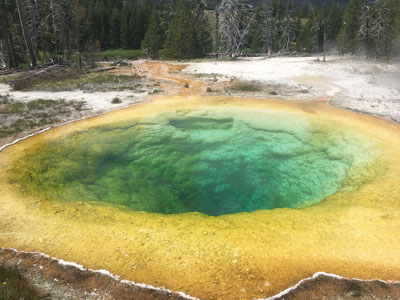Basin with highest concentration of geothermal features in the park, including the most famous geyser in the park, Old Faithful Geyser, as well as four other predictable large geysers
General Information
The Upper Geyser Basin has the highest concentration of geothermal features in Yellowstone. This complement of features includes the most famous geyser in the park, Old Faithful Geyser, as well as four other predictable large geysers. One of these large geysers in the area is Castle Geyser which is about 1,400 feet (430 m) northwest of Old Faithful. Castle Geyser has an interval of approximately 13 hours between major eruptions, but is unpredictable after minor eruptions. The other three predictable geysers are Grand Geyser, Daisy Geyser, and Riverside Geyser. Biscuit Basin and Black Sand Basin are also within the boundaries of Upper Geyser Basin.
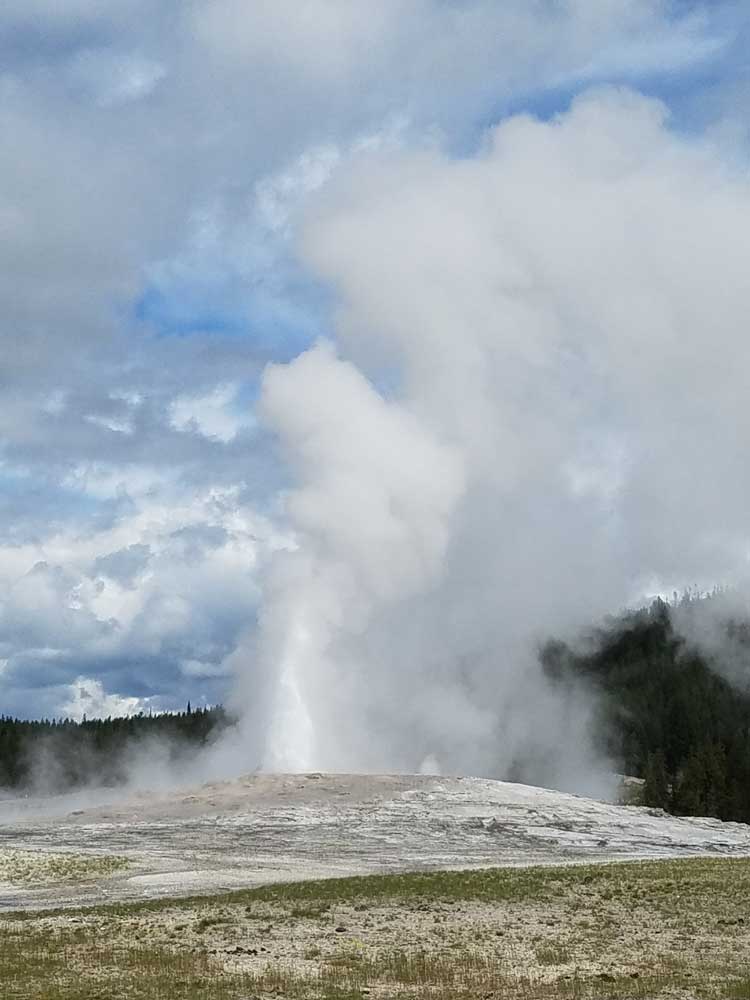
Old Faithful is a cone geyser in Yellowstone National Park in Wyoming. It was named in 1870 during the Washburnd-Langfordd-Doane Expedition and was the first geyser in the park to be named. It is a highly predictable geothermal feature and has erupted every 44 minutes to two hours since 2000. The geyser and the nearby Old Faithful Inn are part of the Old Faithful Historic District.
In the afternoon of September 18, 1870, the members of the Washburn-Langford-Doane Expedition traveled down the Firehole River from the Kepler Cascades and entered the Upper Geyser Basin. The first geyser that they saw was Old Faithful.
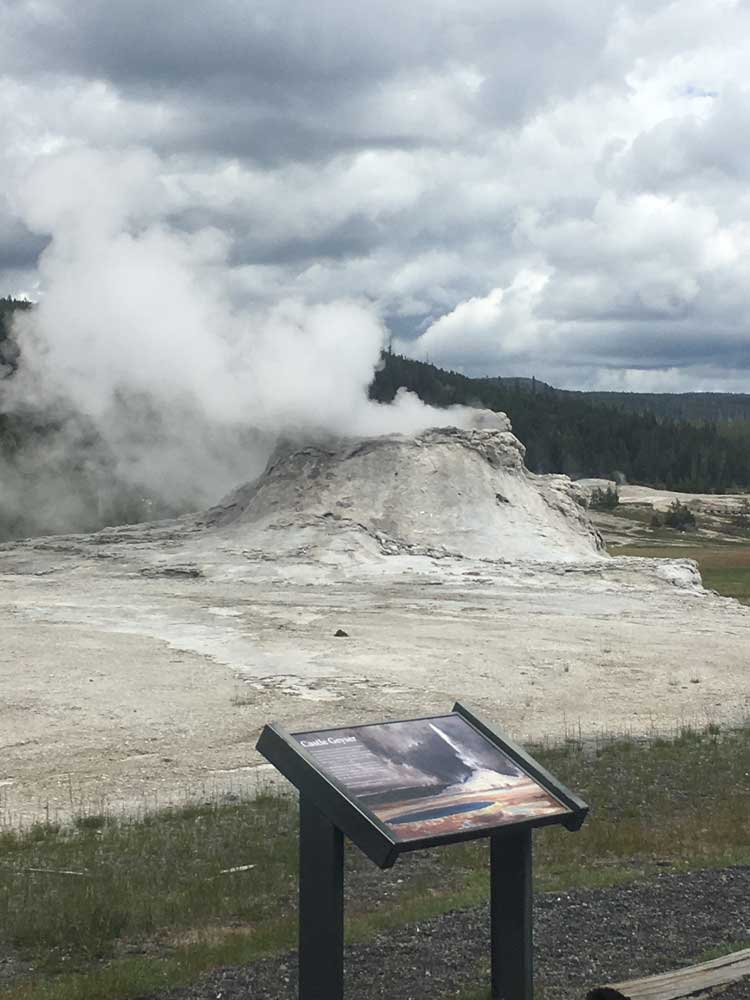
More than 1,000,000 eruptions have been recorded. Harry Woodward first described a mathematical relationship between the duration and intervals of the eruptions in 1938. Old Faithful is not the tallest or largest geyser in the park; those titles belong to the less predictable Steamboat Geyser. The reliability of Old Faithful can be attributed to the fact that it is not connected to any other thermal features of the Upper Geyser Basin.
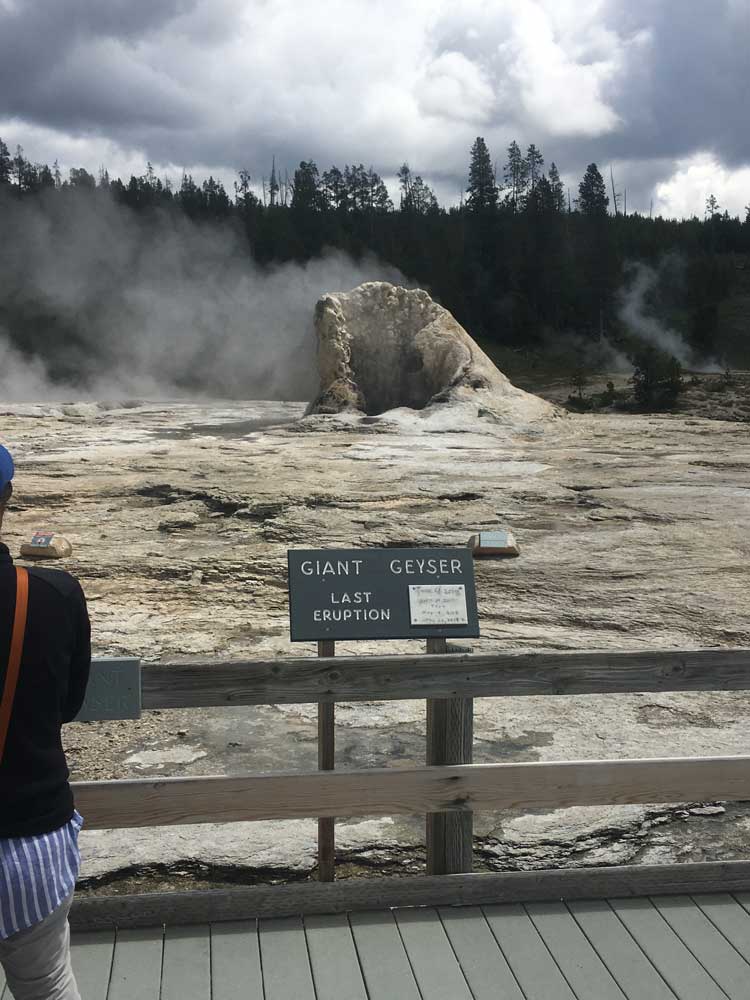
Eruptions can shoot 3,700 to 8,400 US gallons (14,000 to 32,000 L) of boiling water to a height of 106 to 185 feet (32 to 56 m) lasting from 1+1/2 to 5 minutes. The average height of an eruption is 145 feet (44 m). Intervals between eruptions can range from 60 to 110 minutes, averaging 66.5 minutes in 1939, slowly increasing to an average of 90 minutes apart today, which may be the result of earthquakes affecting subterranean water levels. The disruptions have made earlier mathematical relationships inaccurate, but have actually made Old Faithful more predictable in terms of its next eruption. After the Borah Peak earthquake in central Idaho in October 1983, the eruption intervals of Old Faithful were noticeably lengthened.
Castle Geyser is a cone geyser in the Upper Geyser Basin of Yellowstone National Park. It is noted for the particularly large geyserite sinter deposits, which form its cone. These deposits have been likened in appearance to a castle.
When the geyser was given this name in 1870, the top edges of the structure resembled the typical profile associated with the modern concept of a castle, having the appearance of a large keep, multiple turrets, and especially because of the crenellation along the top edges of what resembled its towers. As the drawing below shows the cone had distinctive appearance at the time. Over time the cone's shape changes because of the layers of mineral deposited in successive eruptions.
On September 18, 1870, the Washburn-Langford-Doane Expedition entered the Upper Geyser Basin. Eventually, members of the expedition named seven geysers they observed in the basin. The appearance of this geyser led Lieutenant Gustavus Cheyney Doane to name it Castle Geyser.
The Castle Geyser has a 10- to 12-hour eruption cycle. The geyser erupts hot water for about 20 minutes in a vertical column that reaches a height of 90 ft (27 m) before changing to a noisy steam phase that issues for 30 to 40 minutes.
The sinter cone for Castle Geyser has been dated to around 1022 using carbon-14 dating. This date is much younger than the originally-presumed age of 5,000 to 15,000 years. A 3-D laser scan made of the cone reveals evidence that this geyser has evolved through four to five distinct stages to reach its current configuration.
The pool was named by Mrs E. N. McGowan, wife of Assistant Park Superintendent, Charles McGowan in 1883. She called it "Convolutus", the Latin name for the morning glory flower, which the spring resembles. By 1889, the name Morning Glory Pool had become common usage in the park.
The distinct color of the pool is due to bacteria which inhabit the water. On a few rare occasions the Morning Glory Pool has erupted as a geyser, usually following an earthquake or other nearby seismic activity.
Giant Geyser is the namesake for the Giant Group of geysers, which, on its platform, includes Bijou Geyser, Catfish Geyser, Mastiff Geyser, the "Platform Vents," and Turtle Geyser. Giant Geyser's Platform, a raised stone structure incorporating all these geysers. Giant is notable for its spectacular, but sporadic eruptions, as well as for its very large cone of geyserite, which stands about 12 feet tall.
Giant can go long periods between eruptions. Its activity level varies considerably from year to year. For several years starting in 1955 it was dormant, and from 1963 through 1987 only six eruptions were known to have occurred. By contrast, around 1997 the interval between eruptions averaged as little as four days. The most recent active phase of Giant Geyser started on August 6, 2005 and continued until April 29, 2008, when activity decreased dramatically; there was a single eruption again on August 26, 2008. There were 11 eruptions in 2005, 47 in 2006, 54 in 2007 (the most eruptions for any year since 1955), and 13 in 2008. There were no recorded eruptions in 2009 and 2 in January 2010. Between July 2017 and March 2019, Giant had a total of 39 eruptions. Most recently, Giant Geyser erupted on March 10, 2019. After which, Giant re-entered a state of dormancy. The reasons for this variability are unknown.
The spectacular scale of a Giant eruption, combined with relatively frequent activity in recent years, has caused the geyser to be the object of much study and much has been learned about its eruptive behavior. Giant steams and splashes even during inactive periods, but eruptions can happen only during so-called "hot periods" when there are changes in the activity of the other springs on the Giant Platform as well as more intense splashing in Giant itself. Hot periods typically last a few minutes, and most do not lead to an eruption. When the hot period ends, activity on the Platform returns to normal, and it may be tens of minutes to hours before the next hot period occurs. When Giant does erupt, the activity can be quite dramatic, lasting about an hour and sometimes reaching over 250 feet.
Grand Geyser is the tallest predictable geyser known. It was named by Dr. F.V. Hayden in 1871.
Grand's fountain reaches a height of as much as 200 feet (61 m), with a duration of 9 to 12 minutes. Its eruptions occur in a series of 1 to 4 (rarely as many as 5) bursts.
Grand erupts every 4 to 8 hours. It belongs to the Grand Group (or Grand Geyser Complex), and its eruption is connected to those of the other geysers in the group, especially the adjacent Vent Geyser and Turban Geyser.
For a few hours before an eruption by Grand, Turban Geyser erupts for a duration of five minutes about every 17 to 22 minutes. Grand's eruption begins within 1 to 2 minutes of the start of one of Turban's eruptions, it can also erupt just before Turban's eruption begins, with Vent Geyser erupting shortly after Grand starts erupting. On occasion, Grand will stop erupting after 7 to 9 minutes, only to restart with a usually taller fountain a minute or two later. Grand has been known to rarely experience over half a dozen restarts in a single eruption period. After Grand ceases its eruption, Vent and Turban can continue to erupt for another hour. As of 2018, Grand Geyser has become extremely predictable, with nearly every eruption being 6-7 hours apart.
Upon the finish of an eruption, Grand's pool is empty and takes about five hours to refill.
This article uses material from the Wikipedia articles "Geothermal areas of Yellowstone", "Castle Geyser", "Giant Geyser", "Grand Geyser", "Morning Glory Pool", "Old Faithful", which are released under the Creative Commons Attribution-Share-Alike License 3.0
